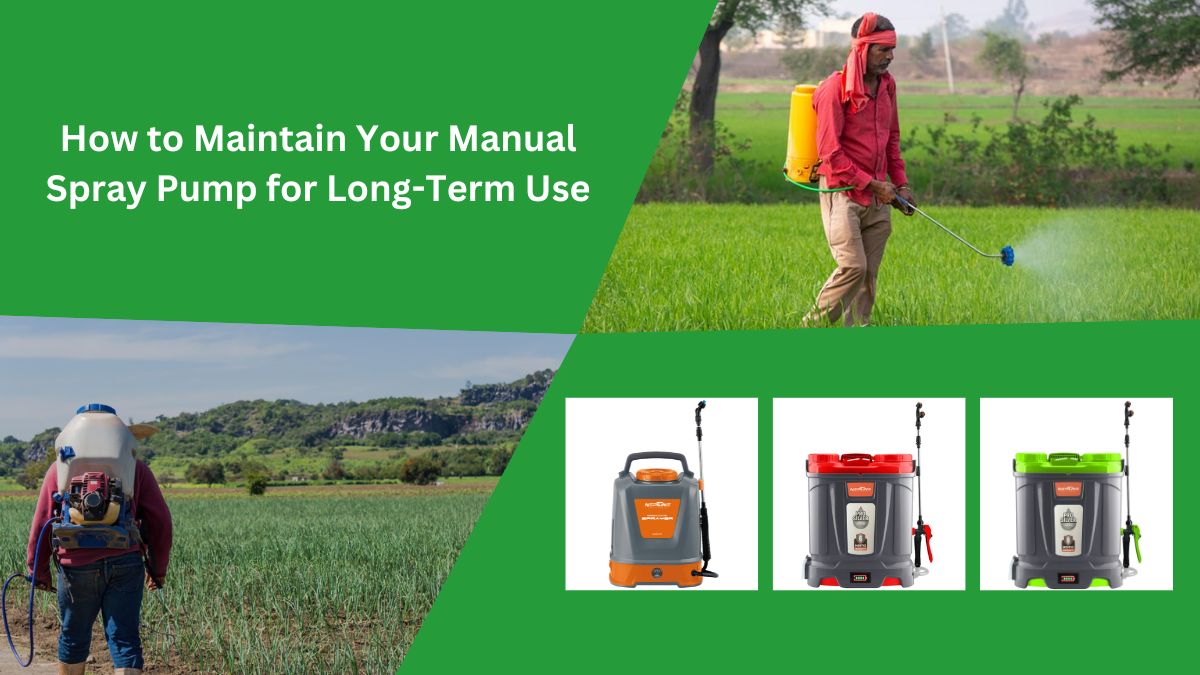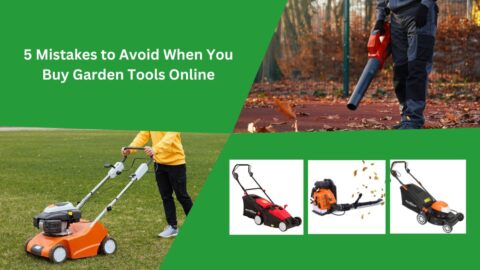A manual spray pump is a go-to tool for many farmers and gardeners who value simplicity, precision, and cost-effectiveness. Despite the rise of modern spraying technologies, this tool continues to be widely used—thanks to its reliability, easy operation, and versatility. However, like any other equipment, it needs regular care and proper handling to ensure it performs well for the long haul.
In this blog, we’ll explore essential maintenance tips, common mistakes to avoid, and the reasons why this traditional tool remains a trusted solution for effective pest control.
Manual Sprayer Pump: A Traditional Yet Effective Spraying Tool
The hand operated knapsack sprayer has been an agricultural essential for generations. Its design is simple—typically consisting of a tank, a hand pump, a spray wand, and a nozzle—but its functionality makes it a dependable tool for a variety of spraying needs. Whether it’s pesticides, herbicides, or foliar feeds, this sprayer gets the job done efficiently, especially in areas where powered sprayers aren’t feasible.
Why It Still Works:
- Low Maintenance: No need for batteries or motors.
- Cost-Effective: Easy to buy, operate, and repair.
- Eco-Friendly: Runs manually—no fuel or electricity required.
While it may not match the capacity or speed of a battery sprayer for agriculture, the manual version remains unmatched in reliability for small-scale farms and gardens.
Common Mistakes to Avoid While Using Manual Sprayer Pump
Even though these tools are built to be durable, they can wear out quickly if misused. Here are some common errors that can reduce their lifespan—and how to avoid them:
1. Not Cleaning After Use
Failing to rinse out the tank and nozzle after spraying is one of the biggest mistakes. Leftover chemicals can cause clogs, corrode parts, and damage the sprayer. Always flush with clean water immediately after each use.
2. Using Incorrect or Undiluted Chemicals
Not all solutions are suited for manual use. Undiluted or incompatible chemicals can lead to internal damage and lower performance. Always read the label and follow dilution guidelines.
3. Storing Without Depressurizing
Leaving the sprayer pressurized after use puts unnecessary strain on seals and internal parts. Always release pressure before storage, and keep the unit in a cool, dry place.
4. Ignoring Wear and Tear
If you notice leaking or uneven spray output, it’s time for a check-up. Replace worn-out gaskets, O-rings, or nozzles promptly to prevent bigger issues later on.
Manual Sprayer: Efficient Pest Control Solutions
The spray pumps for agriculture are still a highly effective choice for pest control, especially when dealing with targeted areas or small plots. With good technique and proper timing, they deliver consistent coverage and precise application.
Benefits of Using a Manual Sprayer for Pest Control:
- Precision Spraying: Helps minimize overuse of chemicals and ensures even application.
- Controlled Pressure: Reduces drift and targets only the intended area.
- Portability: Lightweight and easy to carry—ideal for hard-to-reach places like dense crops or greenhouse corners.
Whether you’re dealing with fungal infections or insect infestations, a manual sprayer gives you the control you need to treat issues quickly and efficiently.
Maintenance Tips to Extend the Life of Your Manual Sprayer
Keeping your sprayer in good condition doesn’t take much—just a little consistency. These simple maintenance tips can go a long way:
1. Clean After Every Use
Flush the tank, hose, and nozzle with clean water. If needed, use mild detergent to remove stubborn residues, then rinse thoroughly.
2. Lubricate Moving Parts
To keep the pump action smooth, occasionally apply a silicone-based lubricant to the plunger and seals.
3. Check for Leaks
Before each use, inspect the sprayer for loose fittings, cracks, or signs of wear. Tighten connections and replace damaged components as needed.
4. Store Properly
Avoid leaving the sprayer in direct sunlight or exposed to freezing temperatures. Always store it empty, depressurized, and in a sheltered spot.
5. Use Filtered Water
Unfiltered water can carry debris that clogs the nozzle. Always strain your solution and use clean water to ensure an even spray.
Final Thoughts
The manual spray pump proves that effective tools don’t always need to be high-tech. With proper maintenance and smart use, this simple yet powerful device can last for years—offering precise, eco-friendly, and budget-friendly spraying.
Whether you’re a backyard hobbyist or a full-time farmer, taking care of your sprayer will save you time, effort, and money in the long run.
Frequently Asked Questions
Q1: How often should I clean my manual sprayer pump?
A: After every use. Regular cleaning prevents clogs and extends the lifespan of the pump.
Q2: Can I use different chemicals in my manual sprayer?
A: Yes, but clean thoroughly between uses and avoid mixing incompatible chemicals that may damage the sprayer.










